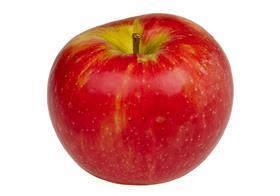
Having visited several of Washington State’s leading major apple marketing companies last week, it’s clear that this year’s crop is hard to call.
While there will certainly be more fruit than last season's 115m-plus cartons, the 2016 apple crop may not exceed the 141m cartons shipped two years ago, which was the largest on record.
One of the 'swing factors' is the size curve of the fruit. While most apple varieties appear to be at least a size larger than last year, a few key ones - such as Grannies, which are prone to alternate bearing - and Fuji, could be down somewhat.
A variable to the upside would be production from acreage planted over the last few years to ‘hot’ varieties such as Honeycrisp, high-colour Galas and club varieties. No-one seems to have a handle on what kind of volume could suddenly materialise with a newseason from this area. If production from new acreage suddenly shoots up this year and the overall size curve for the industry increases by a factor of two, it could translate to a record crop in 2016.
The thing is, it's still a bit early yet to know how the 2016 apple deal will play out. The crop is early compared to the historical average, which could allow the industry to get most of its fruit off the trees and into storage before the weather turns sour in the fall.
That could mean, for instance, getting a full crop of Cripps Pink harvested versus losing a percentage to an early frost. Also, ifgrowing conditions continue to be favourable - and they've been excellentfor the most partsince the spring bloom - fruit quality will be enhanced and that will make for increasedpack-out.
An indication on how the apple crop may fare can often be found in the coinciding cherry deal. The eating quality of cherries this year has been outstanding with fruit sizes running as large as most growers have ever seen. If apples follow suit, 150m cartons-plus is a distinct possibility.






No comments yet